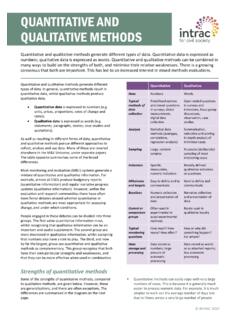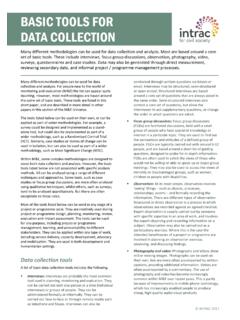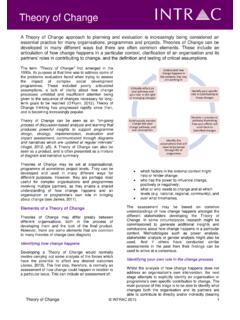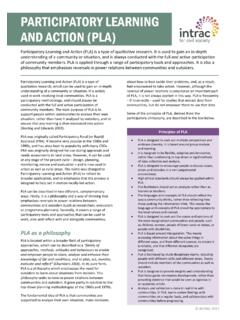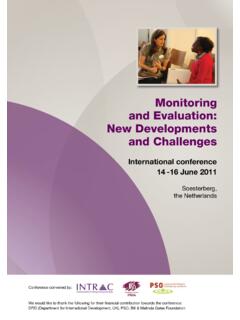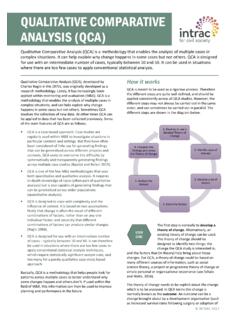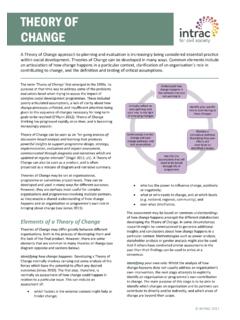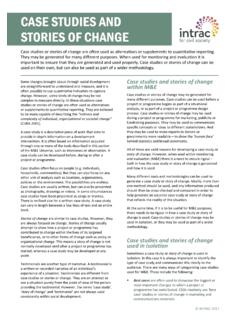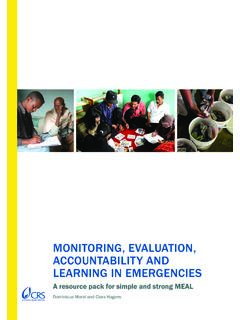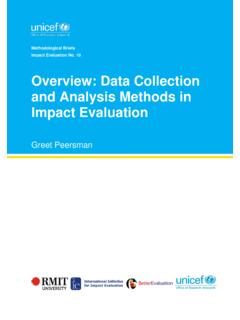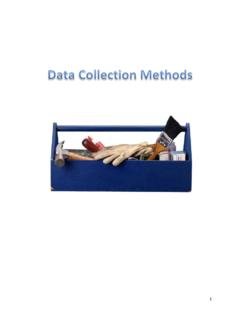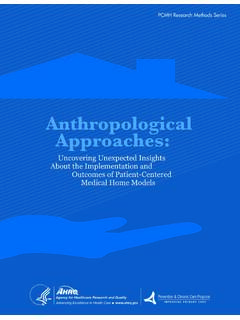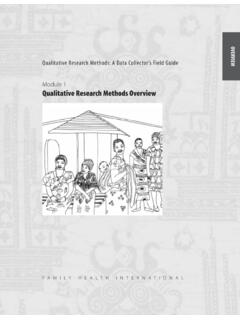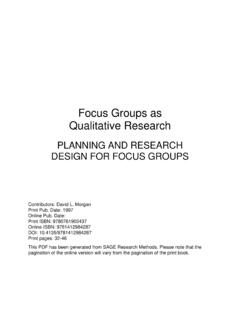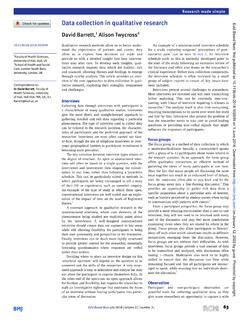Transcription of SECONDARY DATA SOURCES - INTRAC
1 INTRAC 2017 SECONDARY data SOURCES Sometimes, information is used for planning, monitoring or evaluation that has previously been collected by other people or organisations for their own purposes. This is known as SECONDARY data . There are many potential SOURCES of SECONDARY data . SECONDARY data can be used at any stage of a project or programme cycle. Within social development, when somebody collects data for their own purposes it is called primary data . Sometimes, however, information is used for planning, monitoring or evaluation that has previously been collected by other people or organisations for their own purposes.
2 This is known as SECONDARY data . There are many potential SOURCES of SECONDARY data that can be used for monitoring and evaluation (M&E) purposes. Some of these are as follows: governments routinely collect statistics, such as electoral data , tax records and housing information; international or multinational agencies such as the United Nations (UN) generate large amounts of statistics within and across different countries; newspaper articles or other forms of media report may contain useful information; many public service agencies, such as schools, hospitals and agricultural institutions, generate data that can be used for M&E.
3 Research studies and other forms of academic literature may contain useful information, and have usually gone through a degree of quality control; and many development agencies, including CSOs, produce reviews, evaluations and impact assessments that can be valuable SECONDARY data SOURCES for others. Some of this information may be hard to track down. But it is often quite straightforward nowadays to find information on the internet, and a quick search before engaging in costly data collection exercises can save a large amount of time and effort later.
4 Uses of SECONDARY data SECONDARY data can be used by projects, programmes and organisations at any stage of a project or programme cycle. SECONDARY data can provide useful information that can help refine or develop project or programme plans. Indeed, almost all major planning and evaluation exercises begin with a literature review. This helps to avoid repetition of mistakes, and enables plans to build on previous experiences. In some circumstances, SECONDARY data can point to areas that might be investigated further during a baseline or later survey exercise.
5 In cases where no baseline data has been collected, SECONDARY data might also be used to generate a retrospective baseline (a baseline created after the event). For example, a programme might investigate livelihoods within a rural population, and then compare the current situation to the previous situation using SECONDARY data SOURCES , such as government records or surveys conducted by other CSOs in the past. SECONDARY data can be used to help assess change outputs delivered or outcomes/impact achieved. Sometimes, SECONDARY data can be used on its own to show change, but more often it is used to supplement an organisation s own data collection efforts.
6 SECONDARY data can also be used to examine lessons learned from similar interventions. This enables findings and lessons from a project or programme to be triangulated (meaning they can be compared with other interventions to see if findings support or contradict each other). SECONDARY data , however, can rarely be used on its own to assess a project or programme s contribution to change. It may help show whether or how far changes have occurred. But it is unlikely to be much use in examining how a particular project or programme contributed to those changes.
7 For example, when developing logical frameworks many CSOs use SECONDARY data collected by governments or multi-national institutions to show evidence of change at goal or impact level. This includes changes in the Sustainable Development Goals (SDGs). This data may show that change has occurred. However, it does not show how the CSO contributed to that change. This would require additional data collection and / or analysis to be carried out. Strengths and weaknesses of using SECONDARY data SOURCES The main benefit of using SECONDARY data SOURCES is that it saves the time and expense of collecting information.
8 If someone else has already taken the trouble to collect the INTRAC 2017 information required by a CSO then there is little point in replicating the work. However, this only applies if the data is reliable and credible. In some cases this may be easy to establish. For example, the methodology used to collect the data might be clearly outlined, and raw data may be available to conduct checks. Or, as in the case of research studies, the data and findings may already have gone through a quality assurance process. In other circumstances, however, it may be difficult to establish how reliable the data is, particularly if the methodology used to collect it was not clearly explained at the time.
9 In some cases, SECONDARY data can provide much more information than an organisation would ever be able to collect on its own. For example, a government may have carried out a health survey in an area, based on a very large sample of the population. A CSO operating in that area might be able to use the results of this survey, but might not have had the resources or expertise to carry out a similar large-scale survey itself. It is always important for CSOs to carefully assess data from SECONDARY data SOURCES to ensure it actually meets their needs, rather than simply using it because it is convenient.
10 For instance, SECONDARY data from a government survey might cover a wide rural population, and it might not be valid to use that information to understand changes brought about by an individual project affecting just a few villages. Sometimes a balance needs to be struck between using readily available data that provides information on wider populations, and spending time and money carrying out work that is more finely focused on a CSO s target population. A similar assessment may need to be made according to a project or programme s timescales.
